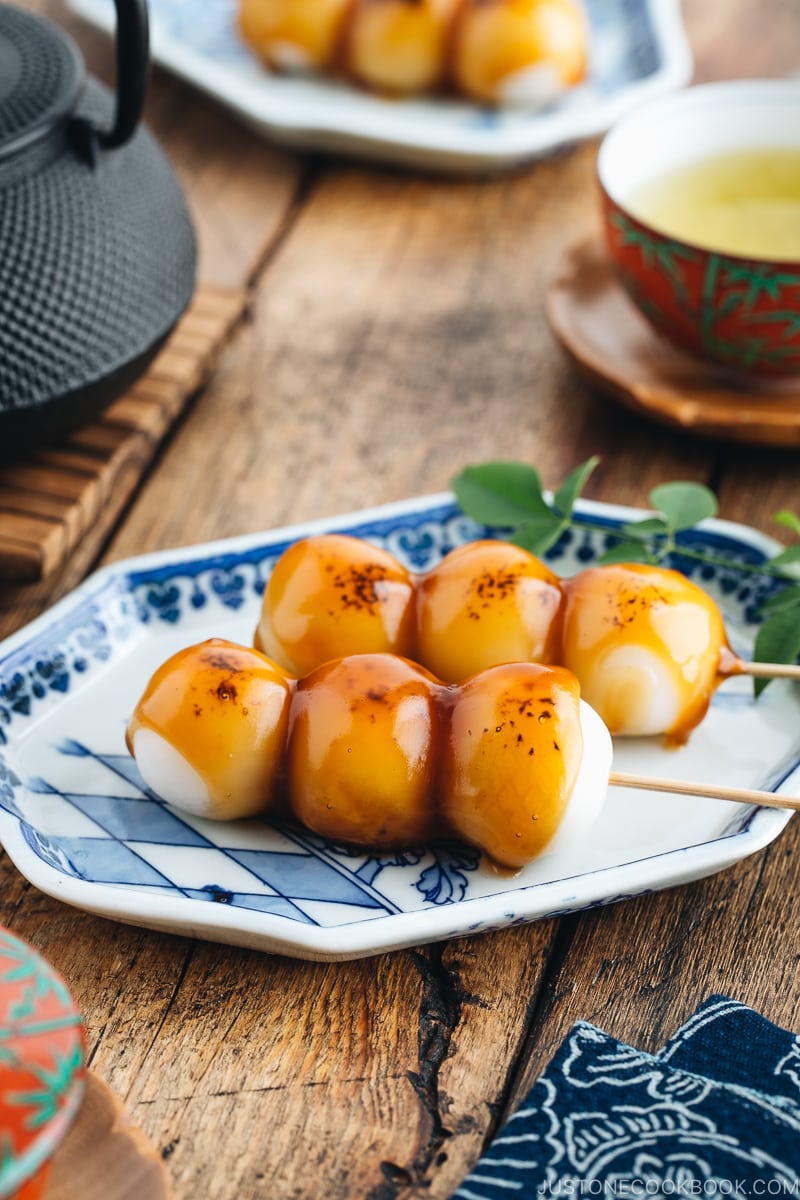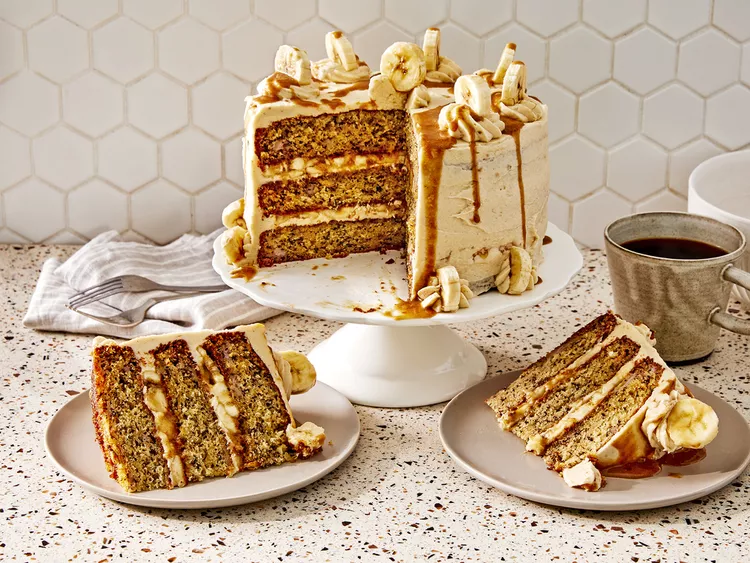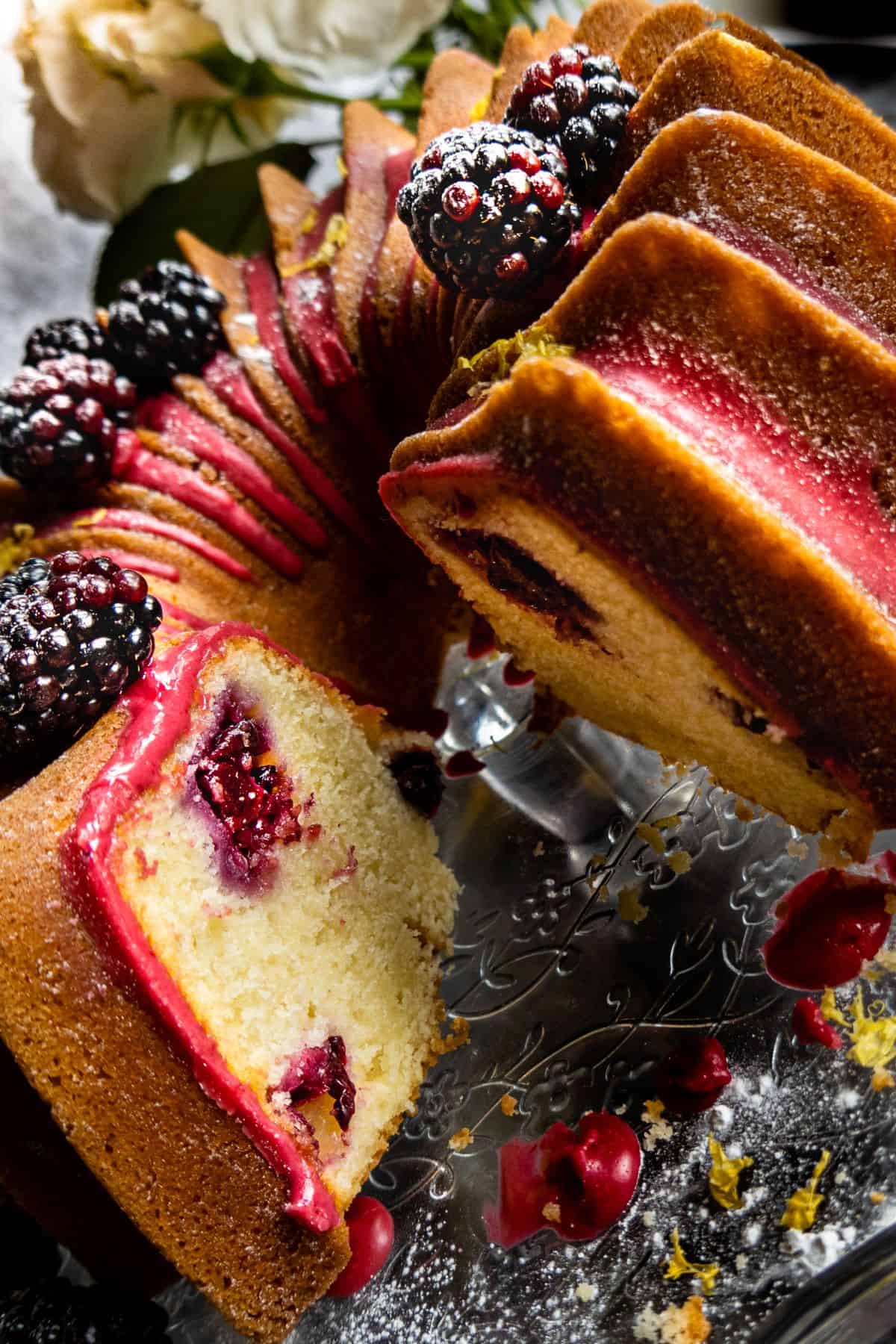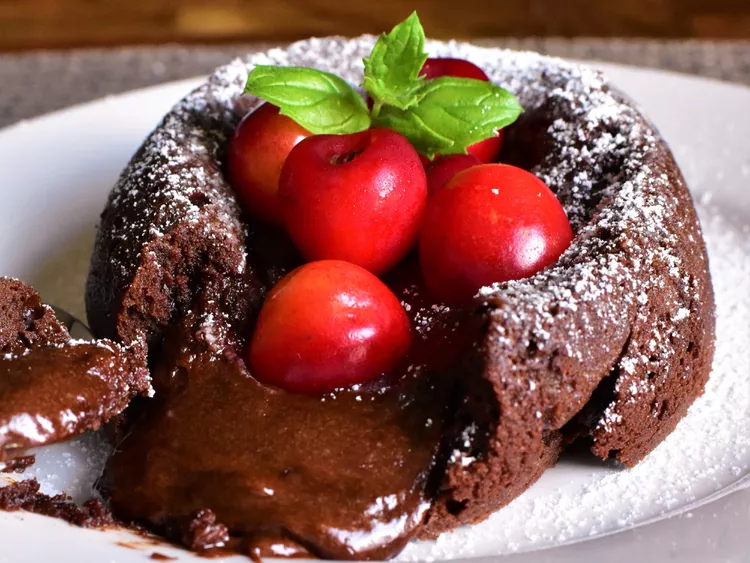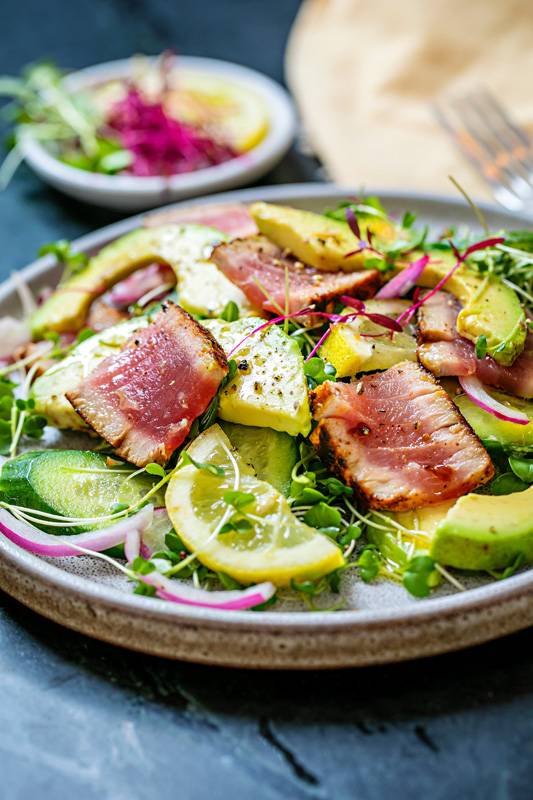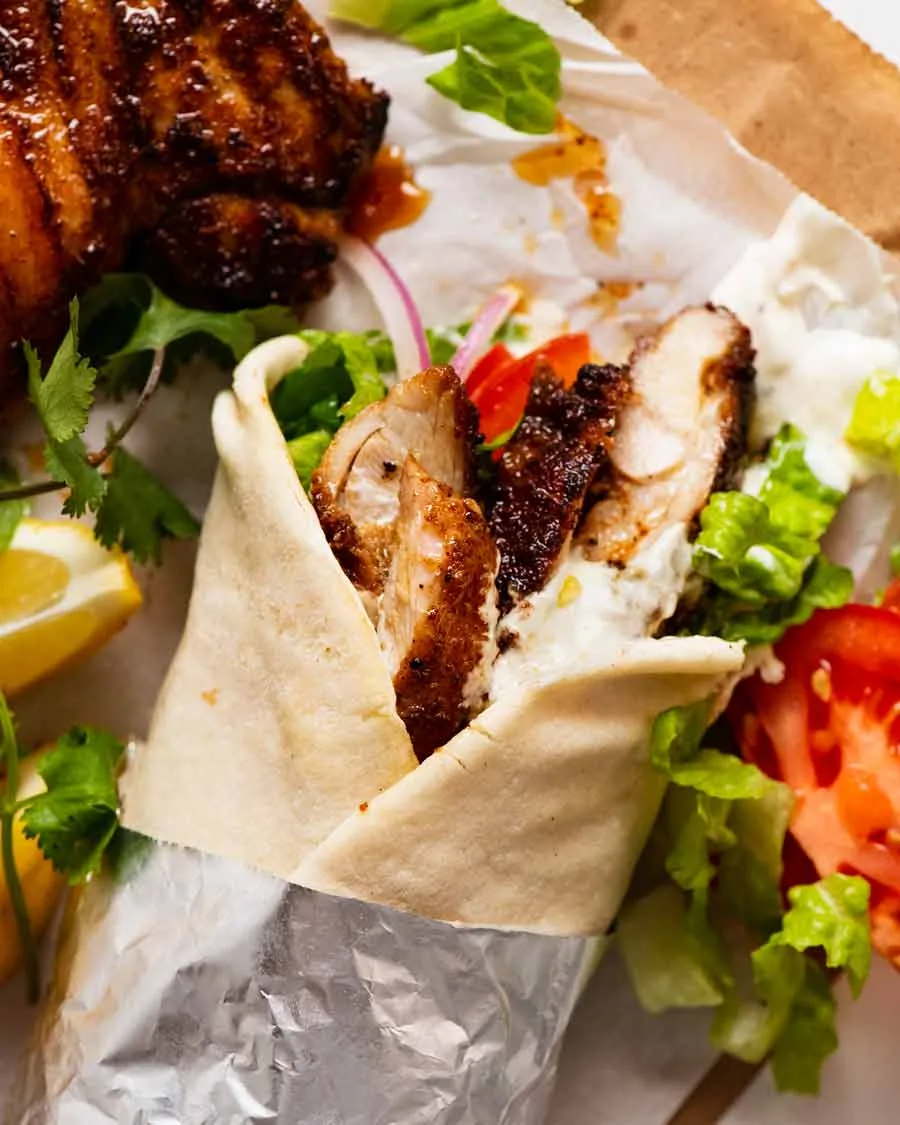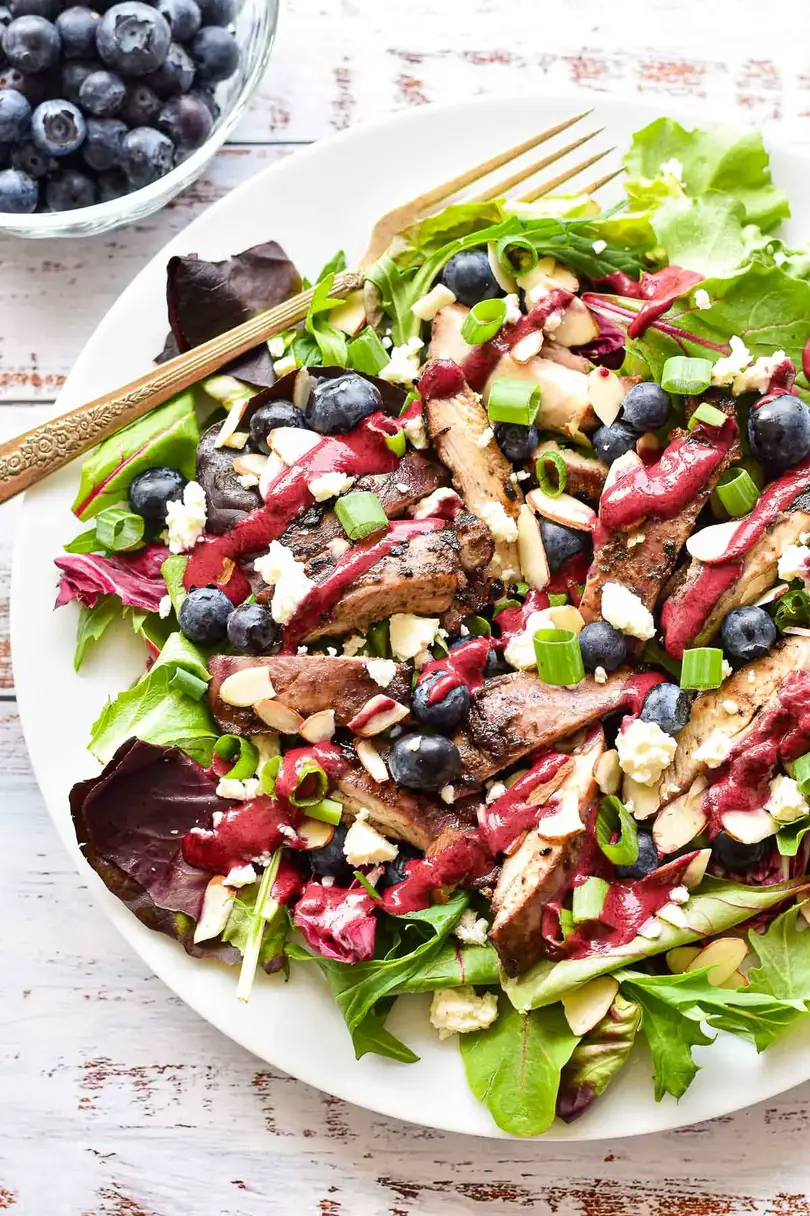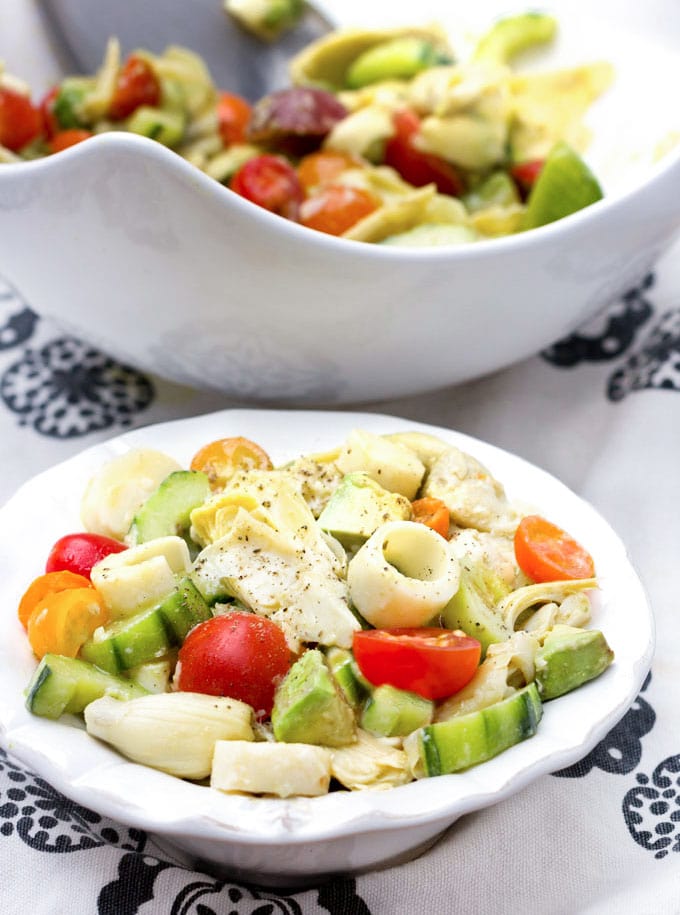Exploring the world of Japanese desserts introduces you to a vibrant array of flavors and textures that are both unique and delicious. From delicate pastries to traditional sweets, these desserts offer a glimpse into Japan’s rich culinary history and innovative food culture.
You’ll find a variety of treats, from the melt-in-your-mouth goodness of mochi to the refreshing taste of matcha-infused delights. These desserts, often prepared with simple yet high-quality ingredients, reflect the Japanese philosophy of balancing taste, presentation, and tradition.
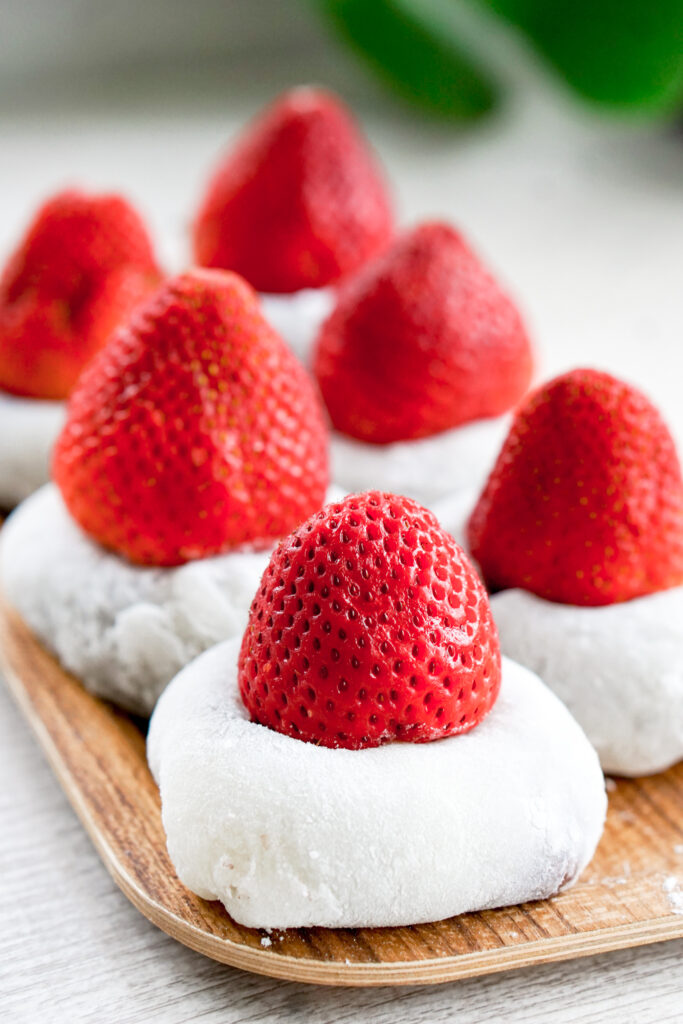
1) Daifuku Mochi
Daifuku Mochi is a popular Japanese dessert. It consists of a soft, chewy rice cake filled with a sweet paste. The most common filling is sweet red bean paste (anko).
To make Daifuku Mochi, you need glutinous rice flour, water, and sugar. Mix these ingredients and heat until the dough becomes thick and sticky. Let it cool slightly.
Take a small piece of the dough and flatten it. Place a scoop of sweet red bean paste in the center. Carefully fold the edges over the filling, pinching to seal.
Mochi is often dusted with potato starch to prevent it from sticking. You can also use cornstarch. Set the finished mochi seam-side down until ready to serve.
Daifuku Mochi can also be filled with other ingredients like strawberries. This version is known as Ichigo Daifuku. It combines the fresh taste of strawberries with the sweet bean paste.
Enjoy Daifuku Mochi fresh, as it can become hard if left out too long. It’s a delightful treat that is both simple and rewarding to make.
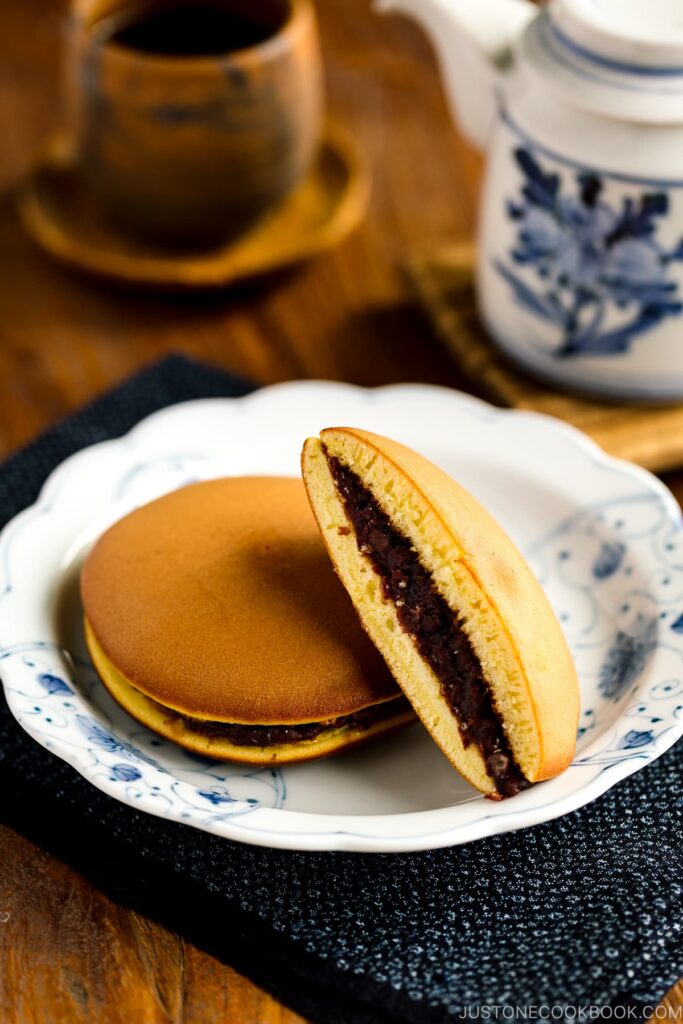
2) Dorayaki
Dorayaki is a popular Japanese dessert. It consists of two fluffy pancakes with a sweet red bean paste filling. The shape of Dorayaki resembles a small drum or gong.
To make the batter, mix eggs, sugar, and honey until fluffy. Then, sift in flour and baking powder. Stir the mixture until smooth. Let the batter rest in the fridge for 30 minutes.
When cooking the pancakes, heat a non-stick pan to medium heat. Pour small amounts of batter into the pan to make round pancakes. Cook until bubbles form, then flip and cook for a few seconds more.
The filling for Dorayaki is typically sweet red bean paste, known as anko. Spread the paste on one pancake and place another pancake on top, creating a sandwich.
Dorayaki is loved for its soft texture and sweet taste. It can be enjoyed as a snack or dessert. You can also find variations with different fillings like custard or chocolate.
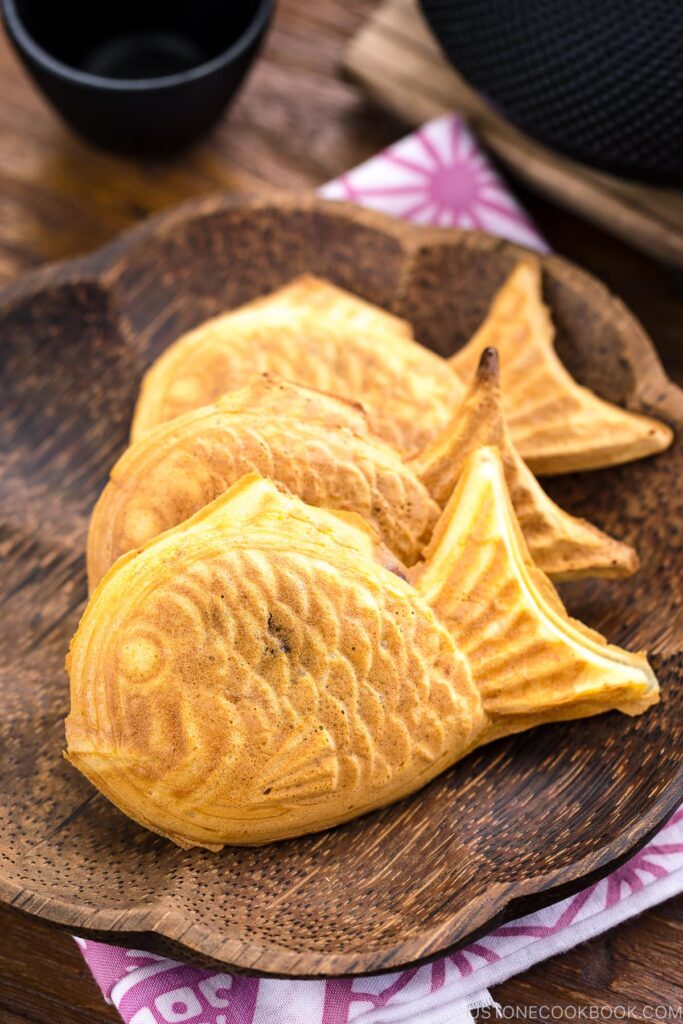
3) Taiyaki
Taiyaki is a popular Japanese dessert shaped like a fish. It’s a fun and unique treat often found at street festivals. The dessert has a crispy outer shell and is typically filled with sweet red bean paste.
To make Taiyaki, you need a special fish-shaped mold. First, brush both sides of the mold with oil to prevent sticking. Pour the batter into the mold, leaving some space for the filling.
After adding the filling, cover it with more batter. Close the mold and cook on medium heat for a few minutes on each side until golden brown. The result is a delicious and visually appealing dessert.
You can experiment with different fillings such as chocolate, custard, or cheese. This allows you to enjoy Taiyaki with a variety of flavors. Taiyaki is not only tasty but also a fun way to enjoy Japanese cuisine.
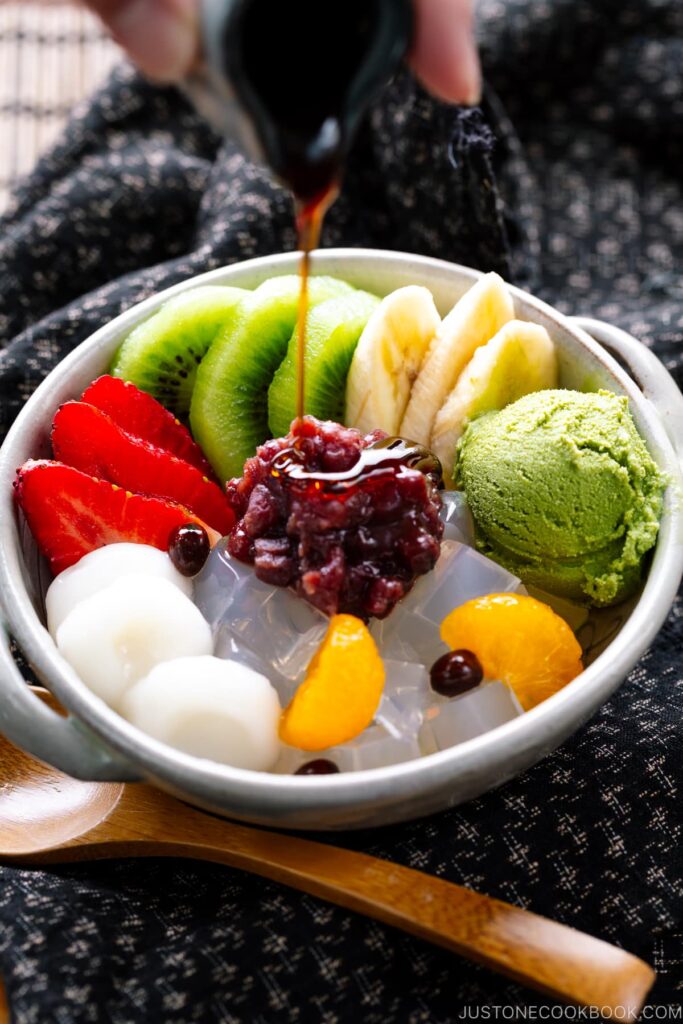
4) Anmitsu
Anmitsu is a classic Japanese dessert that has been enjoyed since the Meiji Era. It features cubes of translucent jelly made from kanten, a type of seaweed-derived gelatin.
You start with a bowl of kanten jelly. Add colorful toppings like strawberries, bananas, and kiwis. Sweet red bean paste, called anko, is a key ingredient and adds a rich, sweet flavor.
Shiratama dango, which are chewy rice flour balls, are often included. For extra indulgence, add a scoop of green tea ice cream.
Kuromitsu, a dark sugar syrup, is served on the side. Pour it over your Anmitsu for added sweetness. Some people also enjoy adding kinako, roasted soybean flour, for a nutty taste.
This dessert offers a variety of textures and flavors in one bowl. It’s a refreshing treat, especially popular in the summer months.
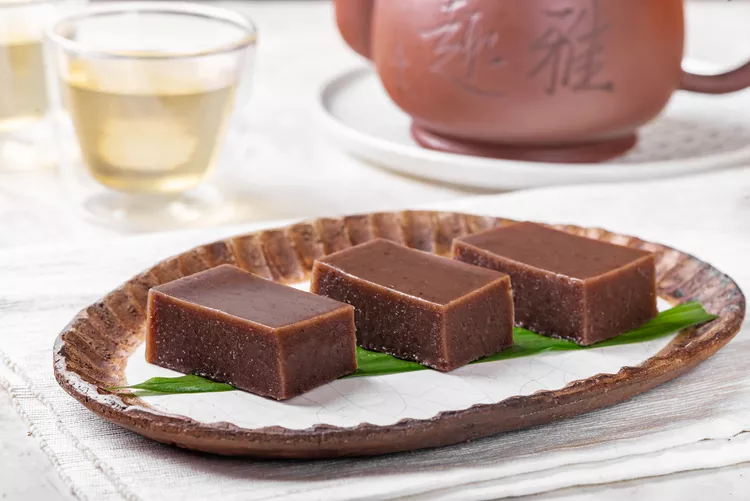
5) Yokan
Yokan is a traditional Japanese jelly dessert made from red bean paste, sugar, and agar-agar.
There are two main types of yokan: Neri Yokan and Mizu Yokan. Neri Yokan has a firmer texture and is typically enjoyed all year round. Mizu Yokan has a higher water content, making it softer and more refreshing, especially popular in summer.
Preparation involves dissolving agar-agar in water, then adding sugar and red bean paste. The mixture is poured into molds and left to set.
Yokan is easy to slice into shapes, making it perfect for serving at tea ceremonies or as a sweet snack. Its smooth texture and subtle sweetness offer a delightful taste experience.
Historically, yokan was adapted from a Chinese dessert using animal gelatin. Japanese Buddhist monks replaced this with agar-agar, creating a vegetarian alternative.
When serving, you can cut yokan into small, bite-sized pieces. It pairs well with green tea and can be enjoyed any time of the day. Variations include additional ingredients like chestnuts or sweet potatoes, providing unique flavors.
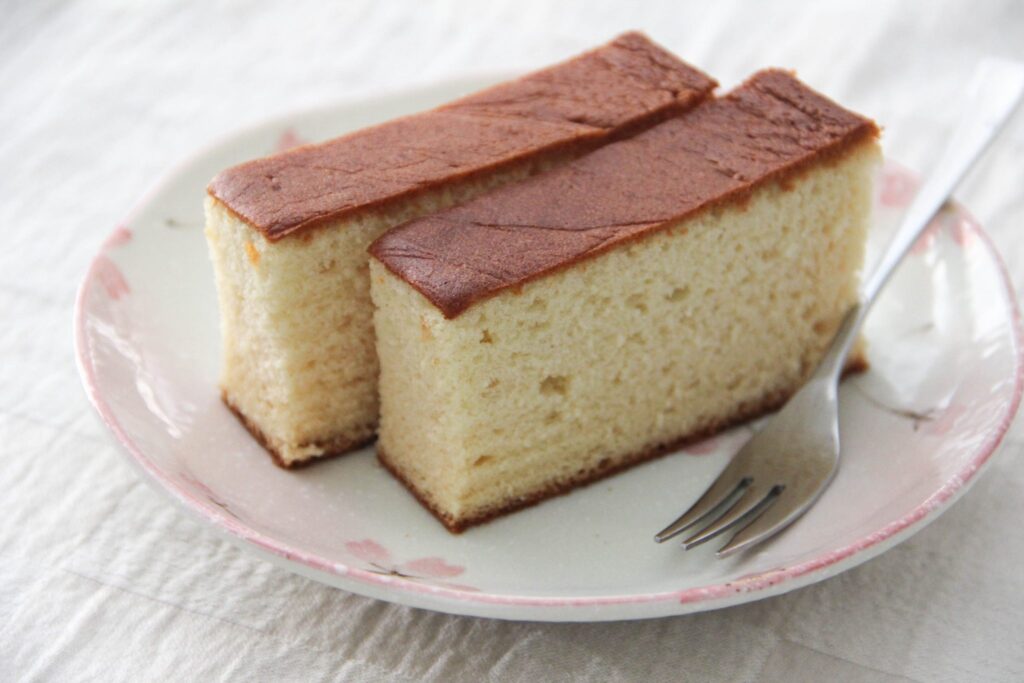
6) Kasutera
Kasutera, also known as Castella, is a traditional Japanese sponge cake. It has a history of over 400 years. Portuguese merchants and Christian missionaries introduced it to Japan in the 16th century.
This cake is known for its smooth, golden top and soft, bouncy texture. It’s made with simple ingredients like eggs, sugar, flour, and honey.
To make Kasutera, you need to beat the eggs and sugar for about ten minutes. This creates a light and airy batter. Mix in a blend of milk and honey that has been gently heated.
The batter is then combined with sifted bread flour. Pour the mixture into a greased and lined baking pan. Bake it at 340°F (170°C) or slightly lower if you’re using a convection oven.
One tip for a smooth finish is to spray water over the batter before baking. This helps keep the top moist and prevents cracks.
Kasutera is often enjoyed with tea. Its delicate sweetness and fluffy texture make it a favorite dessert in Japan. You can also find variations using green tea, brown sugar, or other flavorings.
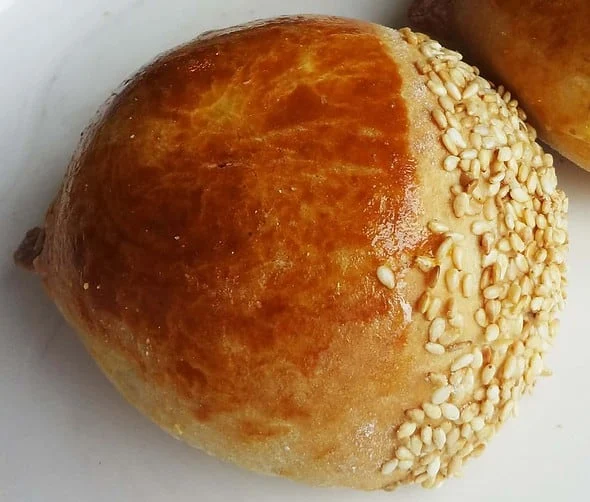
7) Manju
Manju is a traditional Japanese dessert with two main parts: the outer shell and the inner filling. The outer shell is typically made from kneaded wheat or rice flour and is steamed to give it a chewy texture. Inside, you’ll usually find a creamy red bean paste called anko.
Making manju involves preparing the dough and the filling separately. You start by mixing brown sugar with water over low heat until the sugar dissolves. This mixture is then cooled and combined with flour to create the dough.
To shape the manju, divide the dough into small pieces, flatten each piece, and wrap it around a spoonful of anko. Shape each filled dough piece into a round ball. Each manju is placed on a small sheet of parchment paper before being steamed.
Manju comes in various shapes and flavors. For example, momiji manju are shaped like maple leaves. Despite these variations, the essence of manju remains the same: a delightful blend of sweet, chewy dough and creamy filling.
Whether you enjoy them warm or at room temperature, manju offers an authentic taste of traditional Japanese sweets that you won’t want to miss.
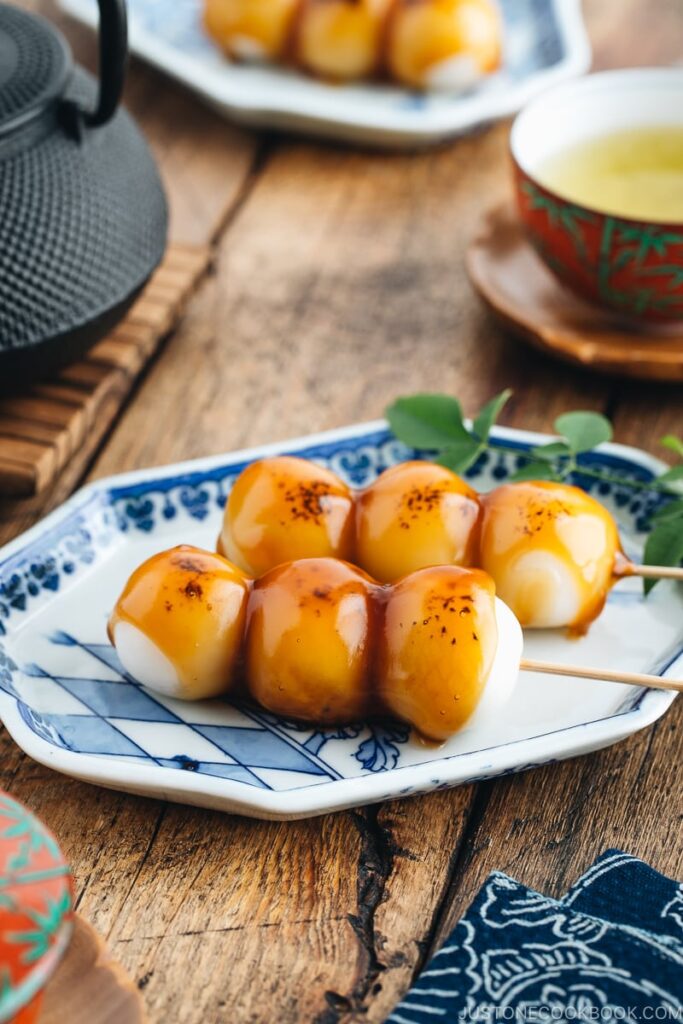
8) Mitarashi Dango
Mitarashi Dango is a popular Japanese dessert, known for its sweet soy sauce glaze. These dango are small, round rice dumplings often skewered on sticks, with three to five balls per skewer.
To make Mitarashi Dango, you will need glutinous rice flour and water to form a smooth dough. Roll the dough into small balls and boil them until they rise to the surface.
The sauce is made by mixing sugar, soy sauce, water, and a thickening agent like cornstarch. Heat this mixture until it thickens into a glaze.
After boiling, you can grill or pan-fry the dango until they are lightly browned. This adds a nice texture. Finally, coat the dango with the sweet soy glaze. Enjoy them warm or at room temperature.

9) Crepe Cake
Crepe cakes are a delightful treat made from layers of thin crepes. Each crepe is spread with a light filling, like whipped cream or pastry cream. These layers create a beautiful, multi-layered dessert that looks impressive and tastes delicious.
For an authentic Japanese twist, you can use matcha (green tea) powder in the filling or the crepe batter. This adds a subtle tea flavor and a vibrant green color.
Making the crepes is the most time-consuming part. You’ll need to cook each crepe individually, ensuring they are thin and even. After cooking, let the crepes cool before assembling the cake.
Once the crepes are ready, start layering. Spread a thin layer of your chosen filling on each crepe and stack them carefully. Refrigerate the finished cake for at least an hour to let it set.
Serve the crepe cake chilled. Each slice reveals the beautiful layers, making it a perfect dessert for special occasions. It’s light, elegant, and utterly delicious.
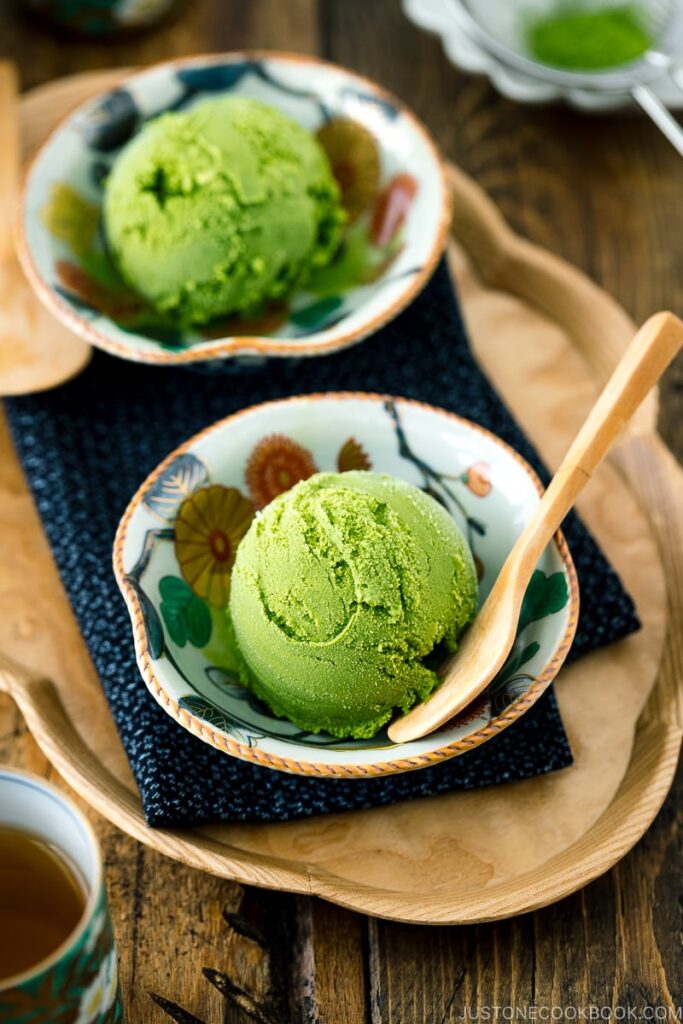
10) Matcha Ice Cream
Matcha ice cream is a beloved treat in Japan. It’s made from matcha, a finely ground powder of specially grown green tea leaves. This gives it a unique, earthy flavor. The bitterness of the matcha is balanced by the sweetness of the ice cream, making it a refreshing and delightful combination.
You can find matcha ice cream in various forms. There’s traditional scoopable ice cream, soft-serve versions, and even ice cream sandwiches. Some places offer matcha ice cream topped with sweet toppings like red bean paste or mochi. It’s a versatile dessert that can be enjoyed in many ways.
Making matcha ice cream at home is quite simple. Mix matcha powder with a bit of water to form a paste before blending it with the other ingredients. This helps to evenly distribute the matcha flavor throughout the ice cream.
The ingredients are quite basic. You need matcha powder, cream, milk, sugar, and sometimes egg yolks. Some recipes don’t require an ice cream maker, making it accessible to everyone. Just mix the ingredients, freeze, and enjoy once it’s set.
Matcha ice cream is not only tasty but also offers some health benefits from the green tea. It’s rich in antioxidants and can give you a small caffeine boost. Whether you are new to Japanese desserts or a long-time fan, matcha ice cream is worth trying.
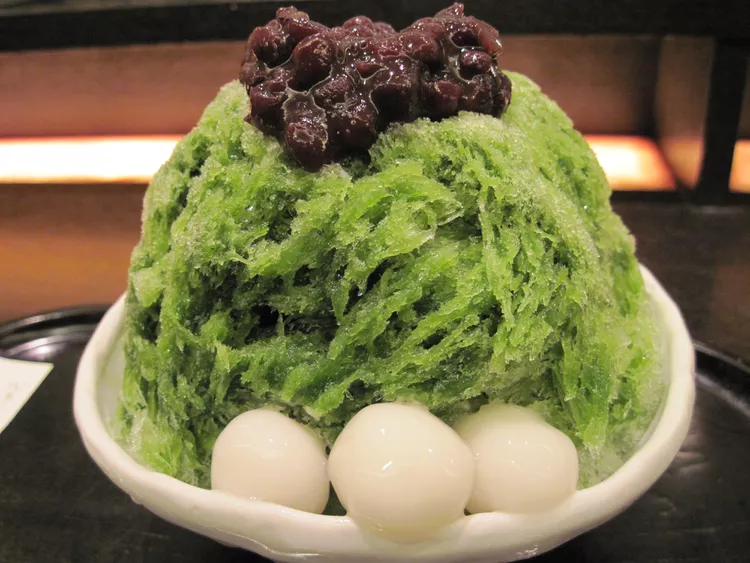
11) Kakigori
Kakigori is a traditional Japanese shaved ice dessert. It is enjoyed especially during the hot summer months. The ice is shaved very finely, making it light, fluffy, and soft. It melts in your mouth like freshly fallen snow.
You can find various flavors of kakigori. Popular syrups include strawberry, melon, lemon, cherry, blue raspberry, and grape. Japanese favorites also include citrus yuzu and sweet plum.
To make kakigori, you need pure water for your ice. Tap water is not recommended. You will also need an ice shaving machine, known as “kakigori-ki.” There are manual and electric versions available. The electric ones are easier to use.
Traditional toppings for kakigori include azuki (sweet red bean paste) and condensed milk. One classic variation is Milk Kintoki, which includes both. Uji Kintoki adds matcha syrup to this mix, creating a unique flavor.
Kakigori stands and shops are common in Japan during summer. They are known for their classic flavors and refreshing treats. Outside Japan, you might find adaptations of kakigori, each with their unique twist.
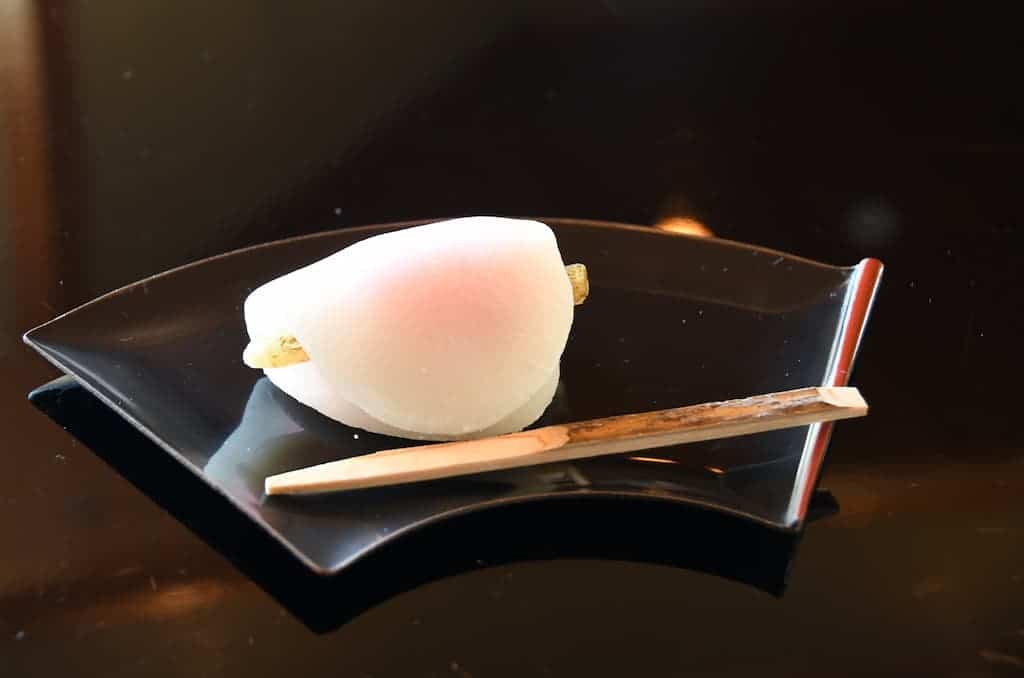
12) Hanabira Mochi
Hanabira Mochi, also known as Flower Petal Mochi, is a traditional Japanese dessert. It is often enjoyed during New Year celebrations. The dessert is known for its delicate, petal-like appearance.
The mochi is shaped like a pale pink petal. It is made by folding a thin, round rice cake and wrapping it around sweet bean paste. A thin stalk of burdock root, or gobo, peeks out from the sides, adding a unique charm.
The dessert’s design is inspired by plum blossom petals, symbolizing white plum blossoms. This symbolism is significant as plum blossoms represent new beginnings and resilience, themes associated with the New Year.
Hanabira Mochi was originally part of the Imperial family’s New Year celebrations. It became widely known during the Meiji Era. Today, it is a familiar and cherished wagashi, or traditional Japanese confection.
Making Hanabira Mochi involves precise techniques to ensure its beautiful appearance and delightful taste. This dessert showcases the artistry in Japanese confectionery. When you taste Hanabira Mochi, you experience both the subtle sweetness of the bean paste and the slight crunch of the burdock root.
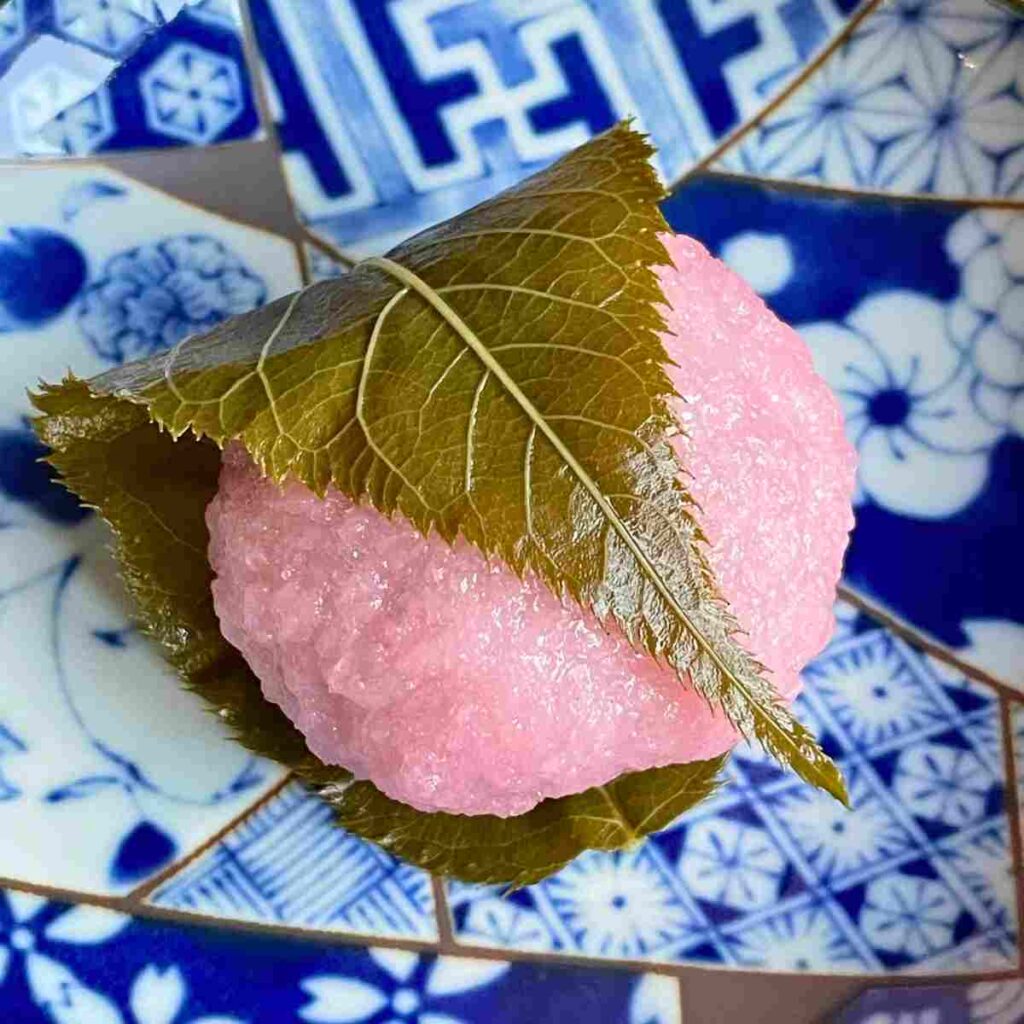
13) Sakura Mochi
Sakura Mochi is a traditional Japanese dessert often enjoyed during spring. This sweet treat consists of pink-colored rice cakes filled with Anko, which is sweet red bean paste.
To make Sakura Mochi, you start by soaking glutinous rice. Once soaked, the rice is cooked until it becomes sticky. Meanwhile, sakura leaves are soaked to remove excess salt.
After the rice is prepared, small balls of Anko are made. You then flatten portions of the sticky rice and wrap them around the Anko balls.
The entire rice ball is then wrapped in a salted sakura leaf. The leaf not only adds flavor but also symbolizes the cherry blossom season.
You can serve Sakura Mochi with green tea. Its sweetness pairs well with the earthy flavor of the tea. This dessert is delightful and visually appealing, capturing the essence of Japan’s spring.
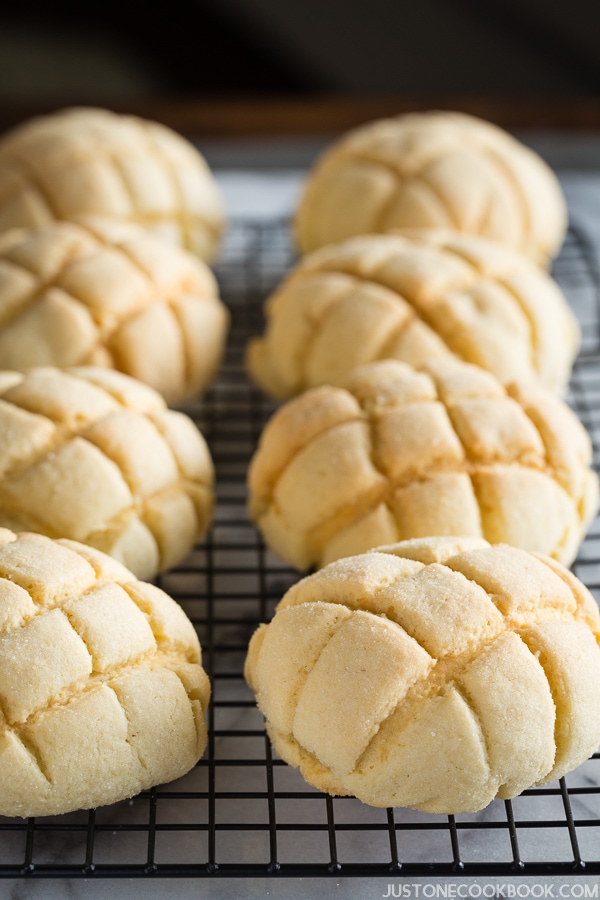
14) Melonpan
Melonpan is a classic Japanese sweet bread. It’s known for its unique appearance and delicious taste. The name “melonpan” comes from the bread’s grid-like pattern, which resembles a melon.
You make melonpan by first preparing a bread dough with flour, yeast, sugar, milk, butter, and eggs. After the dough rises, you shape it into small balls.
Next, you prepare a separate cookie dough using cake flour, butter, sugar, eggs, and baking powder. This dough is rolled into flat rounds and wrapped around the bread dough balls.
Before baking, you roll the dough in sugar and score it with a knife to create the signature pattern. Bake it until the cookie crust is golden and crispy.
Melonpan has a sweet, crunchy exterior and a soft, fluffy interior. It’s enjoyed by many and can be found in bakeries across Japan.
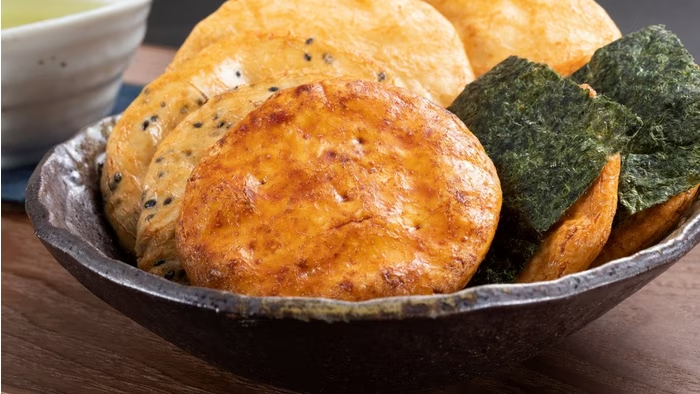
15) Senbei
Senbei are traditional Japanese rice crackers that come in various flavors and forms. They are made from glutinous rice and can be either savory or sweet. The crackers are typically flavored with soy sauce or mirin, giving them a rich taste.
These crackers have a satisfying crunch. They are often enjoyed as a snack or paired with tea. Some senbei are wrapped in nori, which adds a seaweed flavor.
Senbei can also come in small, bite-sized pieces known as “arare.” These are popular for their different shapes and sizes. You might find them in bright colors, making them visually appealing as well.
Whether you prefer salty or sweet snacks, senbei offer something for everyone.
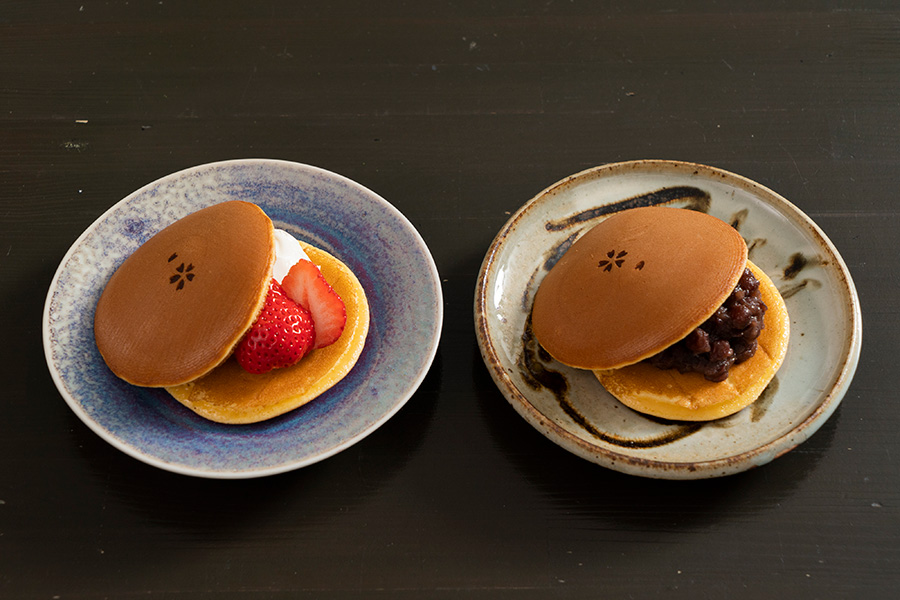
16) Anko-filled Dorayaki
Anko-filled dorayaki are a popular Japanese dessert. They consist of two fluffy pancakes with sweet red bean paste (called anko) in the middle.
The pancakes are made from a batter of eggs, sugar, honey, flour, and baking powder. These ingredients are mixed until the batter becomes smooth. Once cooked, the pancakes are golden and slightly crispy on the outside.
The anko filling gives the dorayaki a unique flavor. It is made from adzuki beans boiled and sweetened with sugar. The sweet and slightly earthy taste complements the fluffy pancakes.
Dorayaki are often enjoyed as a snack or dessert. They are easy to find in Japanese convenience stores, bakeries, and sweet shops.
You might also find variations of dorayaki with different fillings like custard, chocolate, or matcha cream. However, anko is the traditional and most popular filling.
Eating anko-filled dorayaki gives you a taste of traditional Japanese sweets. It’s a simple yet delicious treat that combines the flavors of soft pancakes and sweet red bean paste.
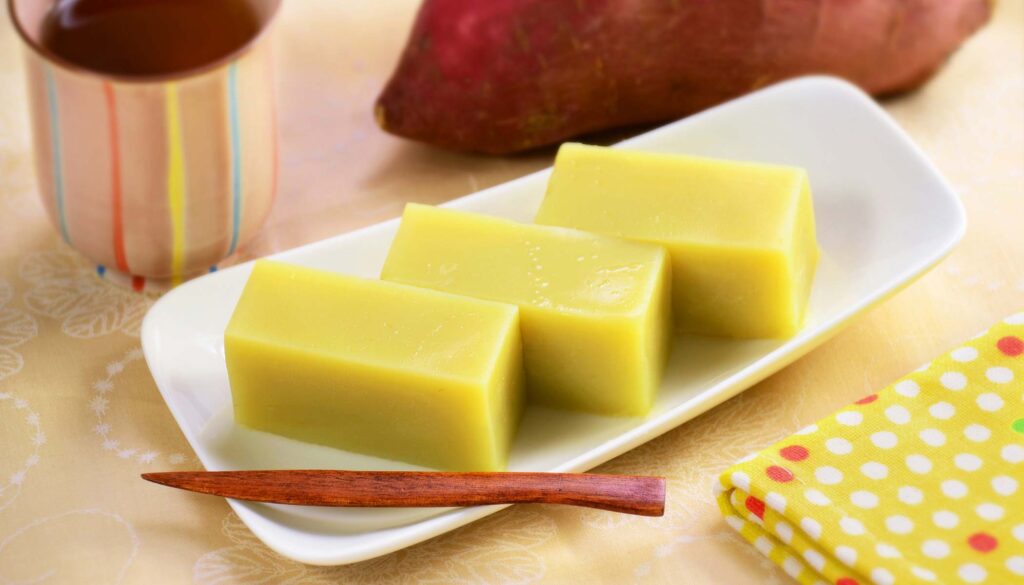
17) Sweet Potato Yokan
Sweet Potato Yokan, known as Imo Yokan, is a delightful Japanese autumn dessert. Made from sweet potatoes, this treat has a simple yet comforting taste.
To prepare Sweet Potato Yokan, you start by steaming sweet potatoes until they are soft. After that, you mash them into a smooth paste.
In a pan, mix agar-agar powder, sugar, and water. Heat the mixture until it dissolves. Then, add the sweet potato paste and cook for about two minutes, stirring constantly.
Once cooked, transfer the mixture into a mold and let it cool. The Yokan will set and become firm. You can then cut it into small, bite-sized pieces.
Imo Yokan is often enjoyed for its natural sweetness and smooth texture. This dessert is popular for its minimal ingredients and ease of preparation.
Whether you are enjoying a quiet evening or hosting a gathering, Sweet Potato Yokan is a satisfying and elegant choice.
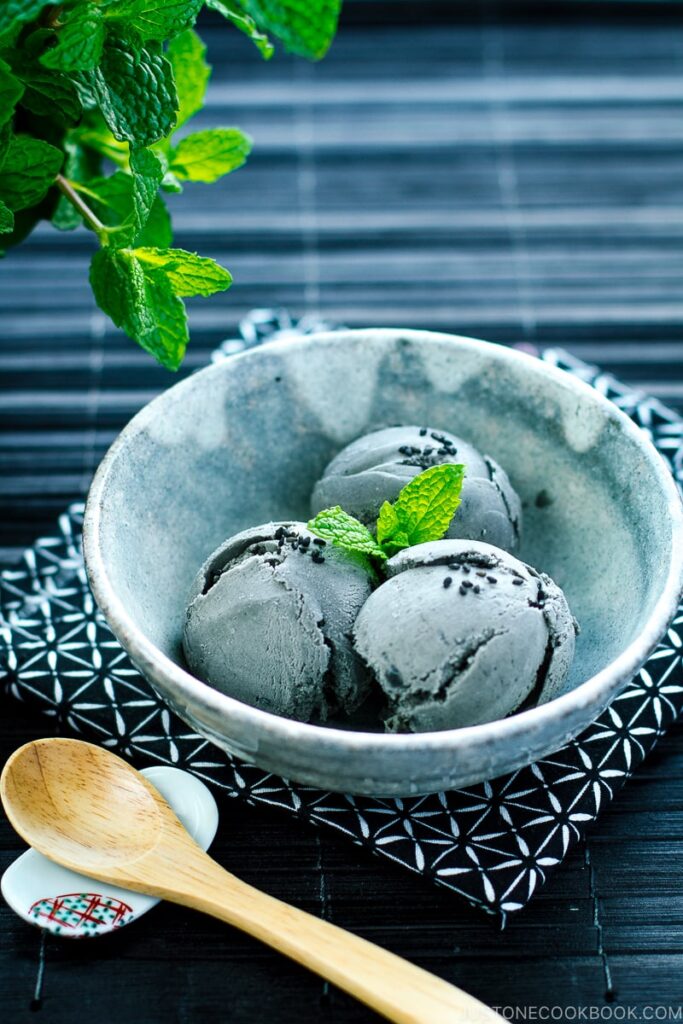
18) Black Sesame Ice Cream
Black sesame ice cream is a popular Japanese dessert known for its unique, nutty flavor and striking dark color.
You start by creating a black sesame paste. Toast the black sesame seeds until they are fragrant. Grind them into a fine powder using a food processor or grinder.
Next, heat milk and cream in a saucepan over medium-low heat until it bubbles. In a separate bowl, whisk eggs and sugar until the mixture becomes pale and smooth. Slowly mix in the black sesame paste.
Combine the sesame mixture with the warm milk and cream. Stir constantly to avoid curdling. Once mixed well, let the mixture cool completely.
Churn the mixture in an ice cream machine according to the manufacturer’s instructions. If you don’t have an ice cream machine, freeze the mixture and stir every 30-45 minutes until fully frozen.
Serve your black sesame ice cream in bowls or cones. This dessert pairs well with other Japanese sweets or can be enjoyed on its own.
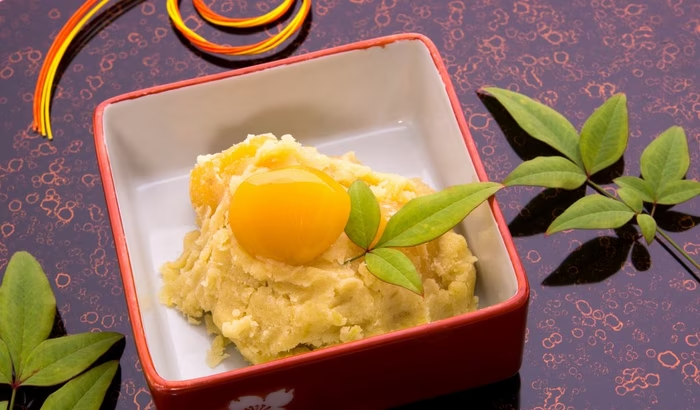
19) Chestnut Kinton
Chestnut Kinton, also known as Kuri Kinton, is a traditional Japanese dessert. It’s made with mashed sweet potatoes and candied chestnuts. This dish is often enjoyed during New Year’s celebrations.
To prepare Chestnut Kinton, start by peeling and chopping sweet potatoes into small pieces. Cook them until they’re soft, then mash them until smooth. The consistency should be like a thick paste.
Next, add mirin, salt, and honey to the mashed potatoes. Stir constantly over low heat until everything is well combined. You may need to add a bit of water to achieve the desired texture.
Once the sweet potato mash is ready, mix in the candied chestnuts. You can use the syrup from the chestnuts to adjust the sweetness. Cook for about 5 minutes until the chestnuts are heated through.
Serve Chestnut Kinton at room temperature. This dish is not only delicious but also visually appealing. The deep yellow of the sweet potatoes and the glossy brown chestnuts make it a feast for the eyes. It’s a simple yet elegant dessert that showcases the flavors of Japanese cuisine.
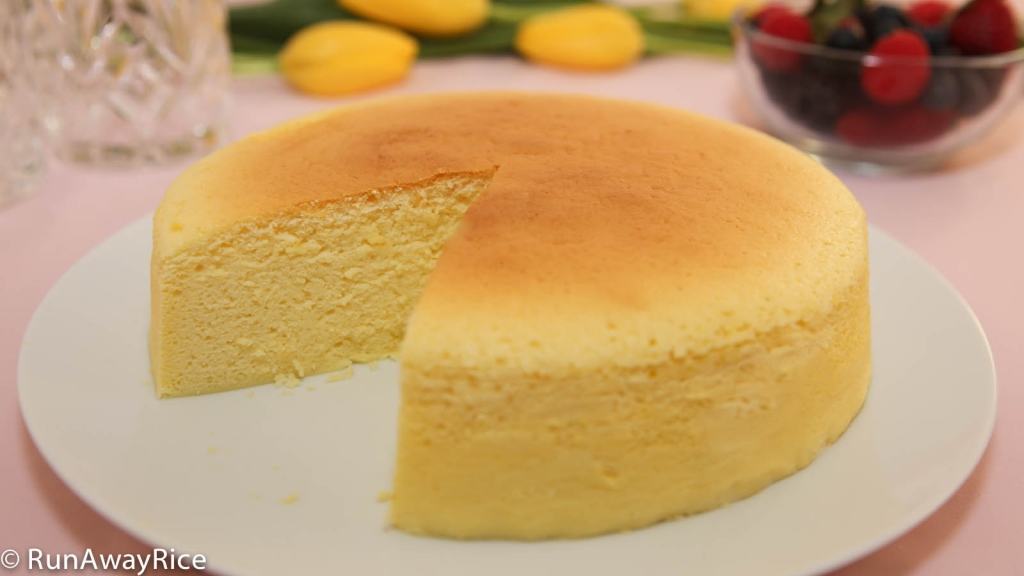
20) Hokkaido Cheesecake
Hokkaido Cheesecake is a popular dessert from Japan known for its creamy texture and rich flavor. This cheesecake stands out due to its high-quality ingredients, primarily sourced from Hokkaido.
Hokkaido is famous for its dairy products, which gives the cheesecake its smooth and luscious taste. You will notice the use of fresh cream and milk which add depth to the dessert.
The baking process involves a bain-marie, or water bath, that helps in achieving a moist and fluffy texture. This method ensures the cheesecake remains soft and doesn’t crack during baking.
You can enjoy Hokkaido Cheesecake both warm and chilled. When warm, it offers a melty, custard-like experience. When chilled, it firms up but maintains its creamy consistency.
The crust typically adds a slight crunch, balancing the smooth filling. This combination of textures makes each bite delightful.
Hokkaido Cheesecakes are often smaller in size, making them perfect for individual servings or as a gift. The golden-brown top hints at a caramelized sweetness which complements the creamy interior.
If you ever visit Japan, trying a Hokkaido Cheesecake is a must to fully appreciate its delicate flavors and unique preparation style.
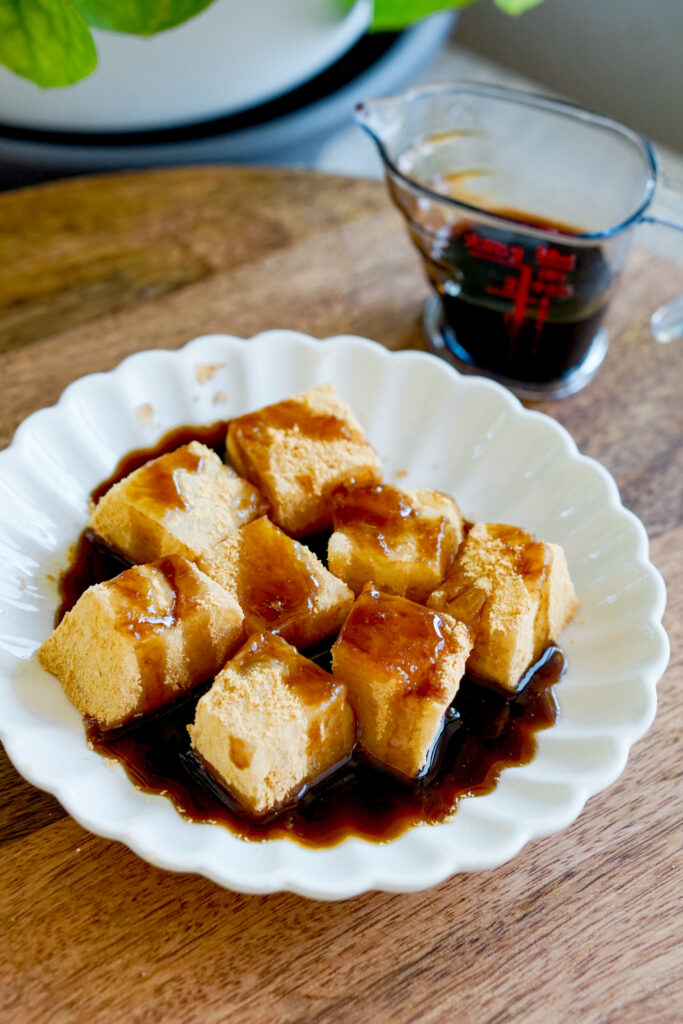
21) Warabi Mochi
Warabi Mochi is a traditional Japanese dessert that stands out for its unique texture and subtle sweetness. This dessert is made using bracken starch, also known as warabiko, which gives it a jelly-like consistency.
To prepare Warabi Mochi, you need to mix warabi starch, sugar, and water in a saucepan. The ingredients are then heated over medium heat until the mixture thickens and begins to boil. Once it reaches the desired consistency, it is allowed to cool.
After cooling, Warabi Mochi is cut into bite-sized pieces. These pieces are often coated with kinako, which is roasted soybean flour. This not only adds a nutty flavor but also enhances its appeal and texture.
Another common topping for Warabi Mochi is kuromitsu, a type of dark syrup made from unrefined sugar. Drizzling this syrup over the mochi adds a rich sweetness that contrasts with the mild flavors of the mochi and kinako.
Warabi Mochi is best enjoyed fresh. It is a refreshing treat, especially popular in the summer months. You can find it in various Japanese sweet shops or even try making it at home.
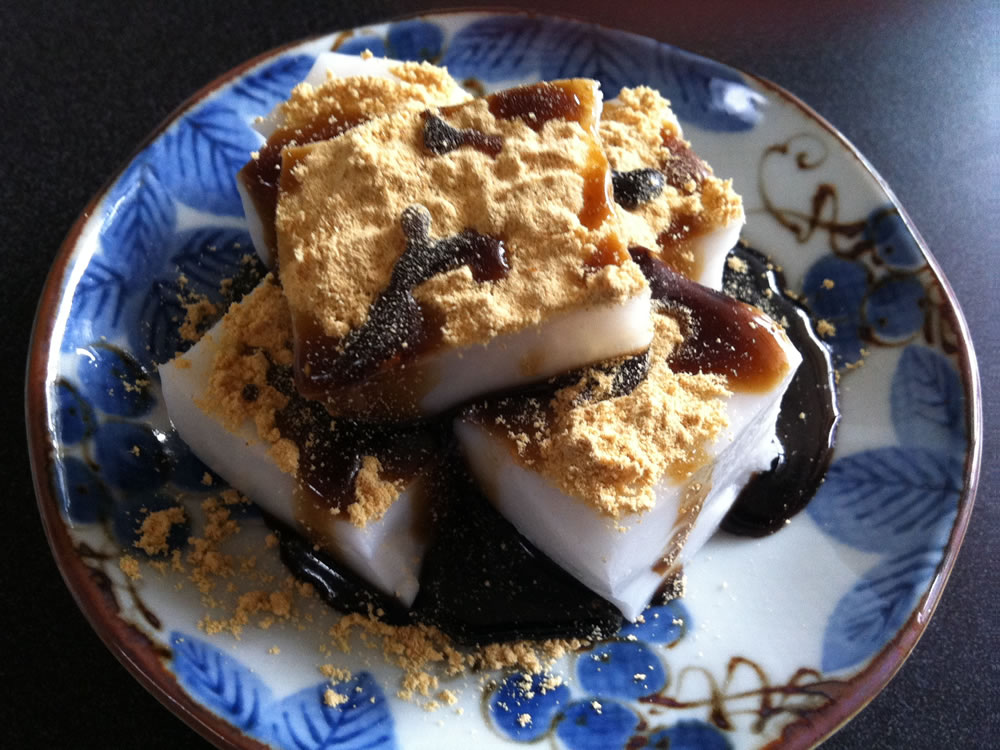
22) Black Sugar Kuzumochi
Black Sugar Kuzumochi is a delightful Japanese treat often enjoyed during summer. This dessert is made using kuzu starch, which comes from the Japanese Arrowroot plant.
To make it, you mix kuzu starch with water and sugar. The mixture is heated until it becomes a translucent, jelly-like substance.
The real magic happens with the black sugar. Known as kuromitsu, this syrup is rich and adds a deep flavor. Drizzle it over the kuzumochi for added sweetness.
Often, this dessert is sprinkled with kinako, roasted soybean flour. The combination of kuromitsu and kinako creates a delicious contrast.
Black Sugar Kuzumochi is chewy and refreshing, making it perfect for hot days. You can find it in Japanese sweet shops or make it at home with simple ingredients.
23) Kinako Dango
Kinako dango are sweet rice flour dumplings covered in roasted soybean flour. These dumplings have a chewy texture and a nutty flavor.
First, mix rice flour, sugar, and water together to form a dough. If it’s too dry, add a bit more water. Roll the dough into small balls weighing around 18-19 grams each.
Boil water in a pot and drop the dango balls in. When they rise to the top, they are cooked. This usually takes about 3-4 minutes.
After boiling, transfer the dango to cold water to cool them down. Let them sit for about 3 minutes, then drain them well.
In a separate bowl, mix kinako (soybean flour), sugar, and a pinch of salt. Roll the cooled dango balls in this mixture until they are evenly coated.
Kinako dango are ready to enjoy. They offer a combination of chewy and slightly sweet taste with a nutty and mildly savory coating.
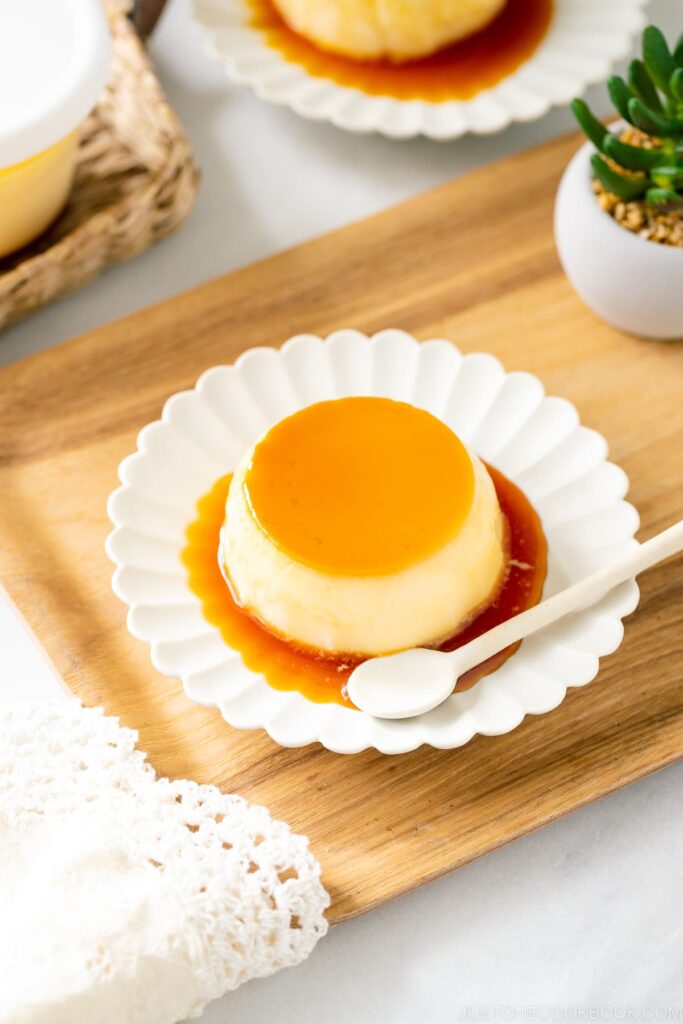
24) Purin
Purin, also known as Japanese custard pudding, is a popular and classic dessert in Japan. Its texture is silky, smooth, and similar to flan. You will find it in many bakeries, convenience stores, and households.
The main ingredients include eggs, sugar, milk, and vanilla essence. Some recipes may call for heavy cream for added richness.
Often, Purin is baked in a water bath, or bain-marie, to achieve its delicate texture. To make the caramel, heat sugar and water until it turns a deep amber color. Pour this caramel into the bottom of the molds before adding the custard mixture.
If baking isn’t your style, you can try a no-bake version. This involves heating the milk, sugar, and eggs on a stovetop and then letting it set in the refrigerator.
Either way, Purin is a delightful treat that embodies the simple elegance of Japanese desserts. Enjoy it chilled, topped with caramel sauce, for a refreshing finish to any meal.
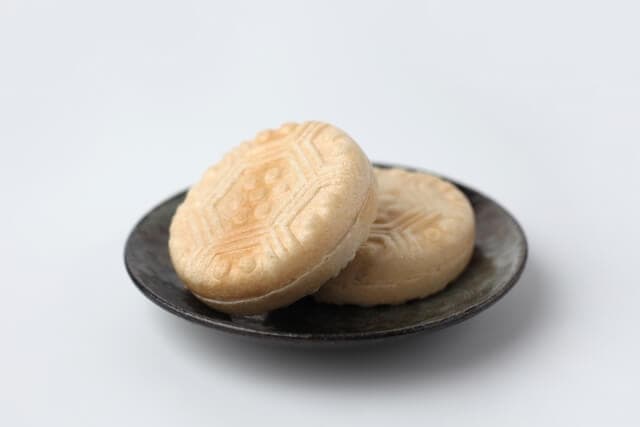
25) Monaka
Monaka is a classic Japanese sweet. It’s made of two thin, crispy mochi wafers with a sweet filling inside. The most common filling is azuki bean jam made from red beans.
The wafers are usually round and come in various shapes, colors, and sizes. They provide a neutral flavor that complements the sweet filling.
You can also find monaka filled with white bean paste or matcha bean paste. The flavors blend well, offering a delightful taste experience.
Monaka is enjoyed all over Japan. This dessert’s texture and sweetness make it a popular choice for tea time or as a special treat.
History of Japanese Desserts
Japanese desserts have a rich history that spans centuries and shows diverse influences. From the Yayoi period to the Edo period and beyond, Japanese sweets have evolved significantly, incorporating elements from both indigenous and foreign cultures.
Evolution Over Centuries
The history of Japanese desserts dates back to the Yayoi period (300 B.C. – 300 A.D.), when people enjoyed natural sweets such as fruits and nuts. The use of rice in desserts began with the advent of mochi, a sticky rice cake, which is one of the oldest processed foods in Japan.
During the Edo period (1603-1867), Japanese desserts became more elaborate. The availability of sugar increased, leading to the creation of more refined sweets. This era saw the development of wagashi, traditional Japanese confections made with ingredients like red bean paste and mochi.
Influences from Other Cultures
Japanese desserts were significantly influenced by trade and cultural exchanges. During the Asuka period (538-710), Japanese envoys to China brought back various sweets, including those made with new ingredients like sesame and walnuts. Chinese pastries, known as karagashi, also influenced Japanese sweet-making techniques.
In the 16th century, Portuguese traders introduced sugar and Western confectioneries like castella, a type of sponge cake. These foreign influences were adapted into Japanese traditions, enriching the variety of local desserts. Even today, many Japanese desserts reflect a blend of native and international elements.
Common Ingredients in Japanese Desserts
Japanese desserts often use unique ingredients that give them their distinctive flavors and textures. Two key components include traditional sweeteners and the use of beans and rice.
Traditional Sweeteners
In Japanese desserts, you will find sweeteners like anko, a sweet red bean paste made from adzuki beans and sugar. Kuromitsu, a dark sugar syrup similar to molasses, adds deep sweetness and is often drizzled over kuzumochi or anmitsu.
Japanese sugar or Wasanbon, originating from Shikoku island, is another vital ingredient. Its fine texture and light sweetness enrich many sweets, such as higashi (dry candies). Mizuame, a sweet syrup made from starch, is also used in candy making and glossy coatings for various desserts.
Traditional sweeteners don’t just add sweetness; they also contribute to the unique taste profile and authenticity of Japanese sweets.
Use of Beans and Rice
Beans and rice are cornerstones in Japanese dessert making. Adzuki beans, typically turned into red or white bean paste, are found in many sweets. Yokan, a jelly dessert, and taiyaki, fish-shaped cakes, frequently contain anko.
Rice, in various forms, is another staple. Mochi, a chewy rice cake, is made from glutinous rice and used in many desserts like daifuku (mochi stuffed with sweet fillings). Dango, rice flour dumplings, are also popular, often served with sweet soy sauce or bean paste.
The use of beans and rice not only provides texture but also a hearty, satisfying flavor to desserts, making them distinct from many Western sweets.
Cultural Significance of Japanese Desserts
Japanese desserts hold a special place in cultural traditions and daily life. They play essential roles in festivals, ceremonies, and reflect the diverse regions of Japan.
Role in Festivals and Ceremonies
Japanese desserts are crucial in many traditional festivals and ceremonies. During New Year celebrations, mochi, a rice cake, is a staple. Mochitsuki, the process of pounding rice to make mochi, is a significant activity. People gather to make and enjoy this treat together, symbolizing unity and good fortune.
In the Tea Ceremony, wagashi, a type of Japanese confection, is served. The delicate sweets are designed to reflect the season and complement the bitterness of matcha tea. The shapes, colors, and ingredients of wagashi are chosen to evoke nature and change with the seasons.
For the Cherry Blossom Festival (Hanami), desserts like sakura mochi are enjoyed. These sweets often have a pink color and are wrapped in cherry blossom leaves, embodying the beauty of spring. They enhance the experience of viewing cherry blossoms, linking the treat directly with the festival’s atmosphere.
Regional Variations
Different regions in Japan have unique desserts that reflect their local culture and ingredients. For instance, in Kyoto, traditional sweets like yatsuhashi, a cinnamon-flavored rice cake, are famous. Kyoto’s desserts often have a refined taste and are linked to the city’s rich cultural heritage.
In Hokkaido, dairy products are prevalent, so you will find desserts like soft cream (soft serve ice cream), which is exceptionally rich and creamy. The area’s cold climate influences the style and content of these sweets.
Meanwhile, Okinawa boasts sweets such as sata andagi, a type of deep-fried doughnut. The influence of tropical climates and unique local resources shape these heavier, satisfying treats.
These regional variations highlight the diversity within Japanese cuisine, showing how local customs and available resources can shape the delectable desserts enjoyed by people across the country.
